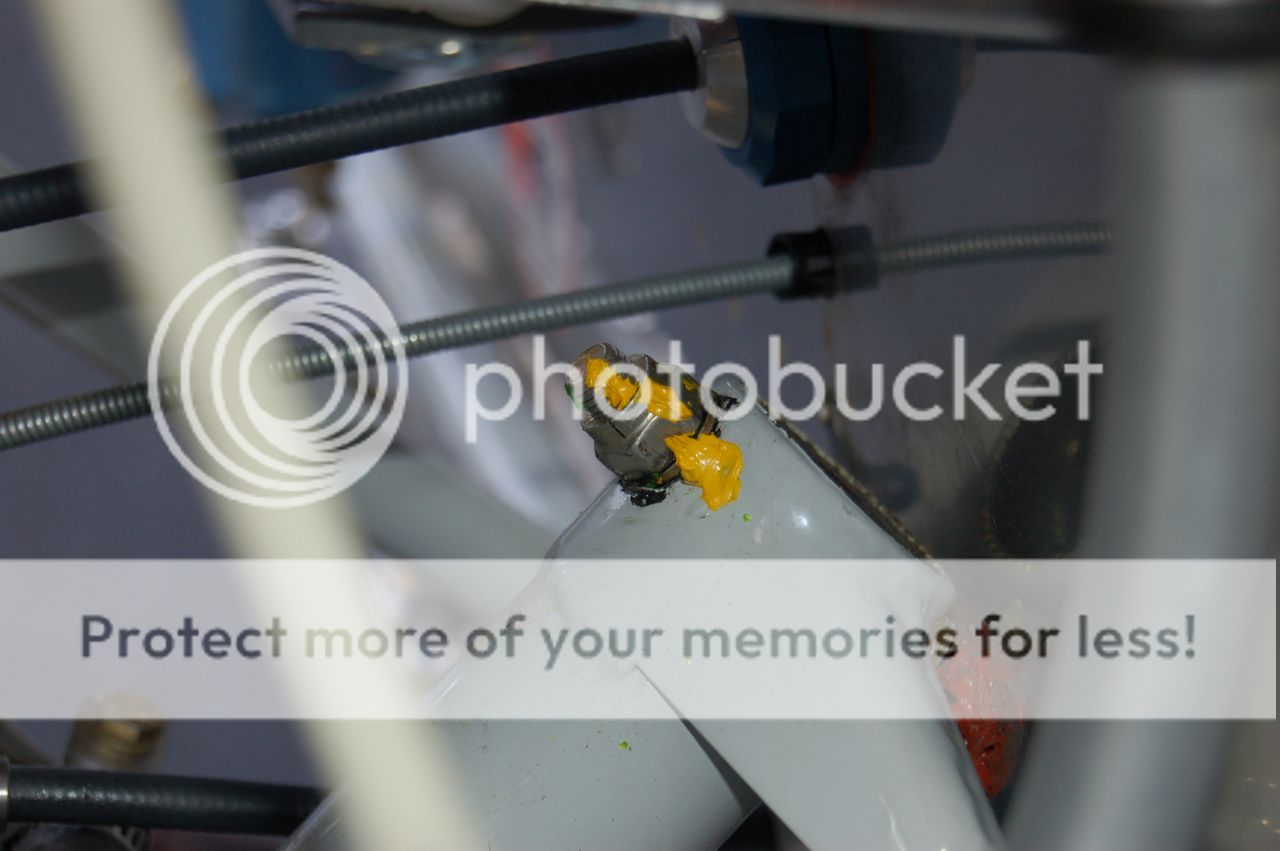Hi All,
I just got done repairing the front gear leg mount bolt hole on my RV-7A a while back. There was a slight bit of wear due to the bolt either loosening and/or the front fork being too tight, causing excessive torque on the gear leg during turns. In any case, there was a slight amount of rotation in the gear leg with the bolt loose, indicating that the bolt holes were slightly oblong...
Here's what I did to fix the problem. First I tied down the tail, and removed the front gear leg. Next, I cleaned both the top mount area and the lower mount area of any grease. I did the same to the gear leg, but re-greased the lower mount area where it comes into contact with the mount. Then I applied permanent Lock-Tight to the inside of the upper mount area, and also coated the top mount area of the gear leg. The gear leg was then inserted back into the mount and the bolt partially re-inserted. (My bolt inserts from the top. The firewall has an indentation for the nut. There is no hole in the firewall for the bolt...).
Next I used a small amount of "Liquid Steel" into the worn areas of the gear leg mounting bolt holes. (Since there was very little wear, I did this instead of drilling out the mount/gear to a larger size bolt, or inserting a taper pin.) The bolt was then torqued normally. I let the assembly dry before testing it for any movement. Solid....
I've flown over 100 Hours after that fix was performed, and still have no movement in the front gear leg upper mount area. I have checked it at every oil change for any signs of movement....
With the history of issues in this are, it would seem prudent to do the final front gear leg assembly with Lock-Tight on the upper mount area. This would prevent the re-occurring issue that we've seen in this area on the -A RV models.... And I've seen it happen to every RV-XA that I've owned....
I just got done repairing the front gear leg mount bolt hole on my RV-7A a while back. There was a slight bit of wear due to the bolt either loosening and/or the front fork being too tight, causing excessive torque on the gear leg during turns. In any case, there was a slight amount of rotation in the gear leg with the bolt loose, indicating that the bolt holes were slightly oblong...
Here's what I did to fix the problem. First I tied down the tail, and removed the front gear leg. Next, I cleaned both the top mount area and the lower mount area of any grease. I did the same to the gear leg, but re-greased the lower mount area where it comes into contact with the mount. Then I applied permanent Lock-Tight to the inside of the upper mount area, and also coated the top mount area of the gear leg. The gear leg was then inserted back into the mount and the bolt partially re-inserted. (My bolt inserts from the top. The firewall has an indentation for the nut. There is no hole in the firewall for the bolt...).
Next I used a small amount of "Liquid Steel" into the worn areas of the gear leg mounting bolt holes. (Since there was very little wear, I did this instead of drilling out the mount/gear to a larger size bolt, or inserting a taper pin.) The bolt was then torqued normally. I let the assembly dry before testing it for any movement. Solid....
I've flown over 100 Hours after that fix was performed, and still have no movement in the front gear leg upper mount area. I have checked it at every oil change for any signs of movement....
With the history of issues in this are, it would seem prudent to do the final front gear leg assembly with Lock-Tight on the upper mount area. This would prevent the re-occurring issue that we've seen in this area on the -A RV models.... And I've seen it happen to every RV-XA that I've owned....





